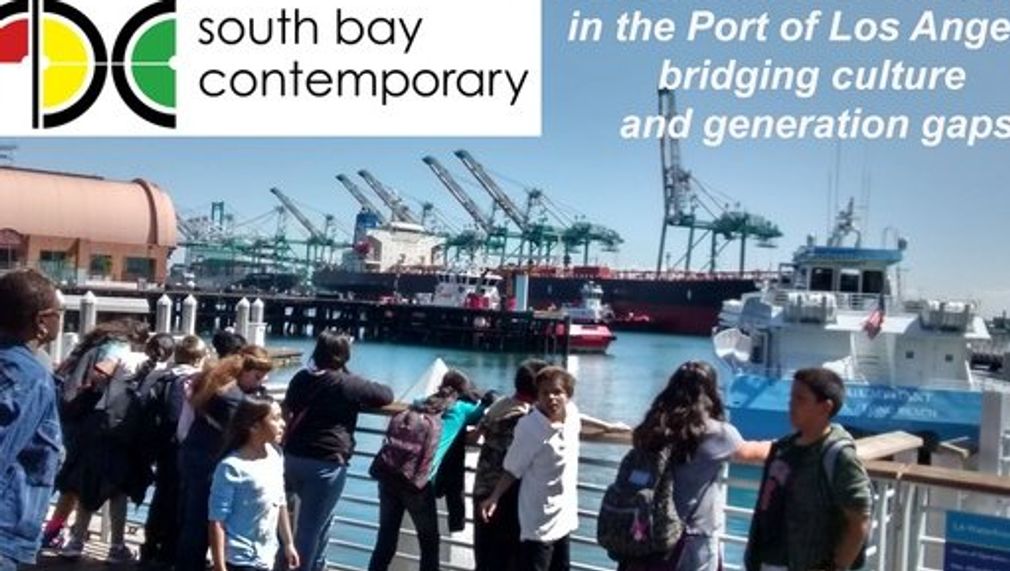South Bay Contemporary, CRAFTED
South Bay Contemporary (SBC) bridges art, science and humanities through exhibitions and experimental projects serving the South Bay and engages the community in reflection of the meaning and relevance of contemporary art through educational programs
Visit this organization’s website to learn more

2 Submitted Ideas
 CONNECT ·2015 Grants Challenge
CONNECT ·2015 Grants ChallengeSBC at CRAFTED: Bridging the Cultural and Generation Gap through Sustainable Art Education

SBC will build and operate a new arts education and exhibition facility at CRAFTED at the Port of Los Angeles. This new SBC arts center, the first of its kind on the LA Waterfront, will appeal to all generations and be accessible to people of all income levels. Our shared goal is to engage youth and seniors in arts and sustainability through a program of exhibitions and workshops that emphasize community, connection and the exchange of ideas between people of all backgrounds and ages.
- 2013 Grants Challenge
Act2Connect
The South Bay Center for Community Development (SBCC) aims to develop tools and solutions that can be owned and operated by community residents themselves. If programs addressing social concerns like economic development, early education, and community safety are like a kind of “social software,” then SBCC's approach differs from the standard practice of installing off-the-shelf products on every system (i.e., neighborhood). We see ourselves instead as open source developers, creating a basic framework for innovation (a project or initiative), then offering training and support in that framework to independent developers (community residents) operating on their own to solve their own unique problems.
Given this philosophy of change, our idea is not a surprising one, but one that we believe has the capacity to improve lives, families, and whole communities. Building on the power of networked relationships to “crowd-source” solutions to seemingly intractable social challenges, we will identify 10 key communities across Los Angeles County that we believe are primed to enter a positive feedback loop of relationship-driven social capital-building, creating a neighborhood infrastructure that amplifies and intensifies the potentials and resources already present in the community to support wellness, safety, and further connectedness. This feedback loop can be broken down into three phases:
* Phase 1: Connect to Plan
* Phase 2: Plan to Act
* Phase 3: Act to Connect
It is in the final phase—Act to Connect—that the core innovation of our approach takes place. Having built a network of community relationships in order expand the possibilities for effective action, having planned an action in collaboration with neighbors, and having successfully carried out that action, a neighborhood group finds itself in a strengthened network of relationships. This intensified network is both an end in itself (effective, supportive social relationships are a primary indicator of overall quality of life within the emerging methods of measuring the “wellness index” of a place or community), and a means to further, more effective and larger-scale action. We believe that this “feedback” stage is the critical, and too-often overlooked, component in any agenda for lasting social change. For this reason, we have adopted it as the name of our overall initiative, which we call Act2Connect.
Crucial to achieving effective feedback is a long-term investment in neighborhood relationships themselves, which SBCC has been making for more than 5 years in communities across L.A. County, working with neighborhood groups to establish a solid network of relationships, habits of trust, and expectations of mutual support. Many of the low-income communities in which we work are characterized by highly transient populations, large numbers of recent immigrants without their own social support and kinship networks, and the high “opportunity costs” associated with underdeveloped social capital: underutilization of supportive resources, overpayment for basic financial and consumer services, lack of access to job and economic opportunities, etc. Thus, helping individuals and families in these communities navigate a path to social connectedness is a valuable end in itself.
In 10 communities selected for high levels of development among these resident groups, and for a self-identified focus on issues of community safety and violence prevention, SBCC will deploy the resources of an LA 2050 grant to take the next crucial step in this process. Residents in each community will leverage their network of relationships to plan a project focused on community safety and/or violence prevention, carry that plan into action at a neighborhood level with the assistance of leadership development coaches and community organizers, and use the base of participants in the project to expand overall participation in the community network.
The choice of community safety and violence prevention is not an arbitrary one. Unsafe and violent communities, streets, and homes are problems that grow in the context of social isolation. By collaborating to establish community safety teams, collective commitments to non-violent streets, and trusted neighbor-listeners to help move families suffering from abuse out of the shadows, these projects will achieve two key objectives:
* Contribute to safer communities, thus increasing another crucial element of the neighborhood's “well-being index,”
* Build more extensive, more effective social networks, leading to expanded trust, higher levels of civic participation and engagement, increased community-wide knowledge of and access to resources and public forums for action, and a greater sense of investment in the community leading to lower levels of transience and the building of durable neighborhood traditions and resident-controlled institutions